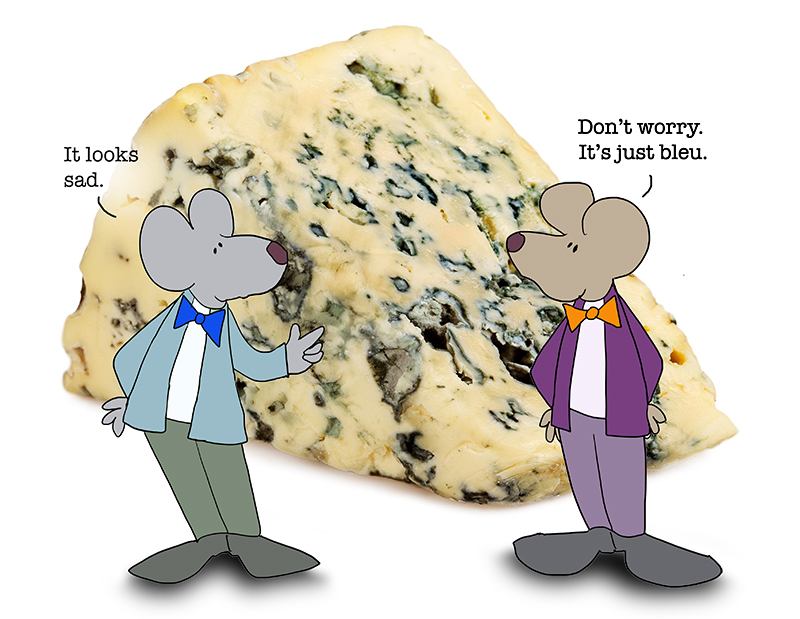Here we go again, it seems. I can’t write about cheese all the time, but it shows itself once more. It was on this date, June 4, 1070, when Roquefort cheese was created in a cave near Roquefort, France. Or so they say.
The legend goes this way. That amazing Roquefort cheese was discovered when a youth, a lad, a boy, was out in the world, eating his lunch of bread and ewes’ milk cheese. Ewe milk.
Let me say this, for the record, I have never milked a cow, goat, sheep, or otherwise. But I would think some sort of pact would have to be made between milkee and milker, before the deed was done. Some sort of “cross my heart and hope to die, I will not pull your teat too hard, or you can poke me in the eye.” I would think.
Anyway. That boy, eating his ewe cheese sandwich, saw a beautiful girl in the distance. Of course, he was ga-ga. And without thinking, he abandoned his meal in a nearby cave and ran like crazy to meet her. When he returned a few months later, the mold (Penicillium Roqueforti) had transformed his plain cheese into Roquefort. Now here’s the thing. If I find my old moldy sandwich somewhere (which would never happen to me because I am so OCD), three months later, I am definitely not going to pick it up and eat it. Not for any reason known to woman. No.
But there it was. And there he did.
I am a fan of bleu cheese. I have been ever since I first tasted it as a little girl, and it is, to this day, my requested dressing on salads and most everything else. It is music to my taste buds.
The difference between bleu and Roquefort? The latter is a sheep milk cheese from Southern France, and only Southern France. Though similar cheeses are produced elsewhere, “EU law dictates that only those cheeses aged in the natural Combalou caves of Roquefort-sur-Soulzon may bear the name Roquefort.”
The cheese is white and tangy and usually crumbly. But it isn’t dry. In fact, it is slightly moist. And there, in its base, are those veins of blue mold. Blue mold with a sharp tang. In France, Roquefort is often called the “King of Cheeses” or the “Cheese of Kings.” I just call it King, for short.
We used to eat at Bill Knapp’s when I was growing up. We’d go there for birthdays, as you got the percentage of your age taken off the final bill. So, if you were ten years old, ten percent. The older you were, the better the deal.
They had Roquefort dressing on their menu. I ordered it every time. All their salad dressings came out in miniature white pitchers. I loved the entire experience and always asked for extra dressing, which I used for my ham croquettes. I ordered those every time too. And au gratin potatoes.
I wonder now about Bill Knapp’s truth in Roquefort. I can’t imagine them shelling out extra dollars for the stuff. Back then, it didn’t matter to me. I was in a cave, back in France, finding my sandwich all over again.
I guess all of this is apropos, although not planned. Today is National Cheese Day, 2021. I think we are all supposed to gladly eat cheese today and give thanks for dairy products in general, including ice cream. Have at it.
https://nationaldaycalendar.com/days-2/national-cheese-day-june-4th/
Back to Roquefort. It shows us quite clearly how something can evolve into something else, over time. It is called change.
Bertolt Brecht once said:
“Because things are the way they are, things will not stay the way they are.”
And here we are. And it will all be different in a moment. Nothing on the earth, the moon, or in the heavens, stays the way it is. Not even ewe milk cheese.
============
“A wise man changes his mind, a fool never will.”
— Icelandic Proverb
=============
“Just when I think I have learned the way to live, life changes.”
— Hugh Prather
============
“Change is inevitable. Growth is optional.”
— John Maxwell
============
Moldy Ewe Cheese. Ewe. You. Love it or not.
